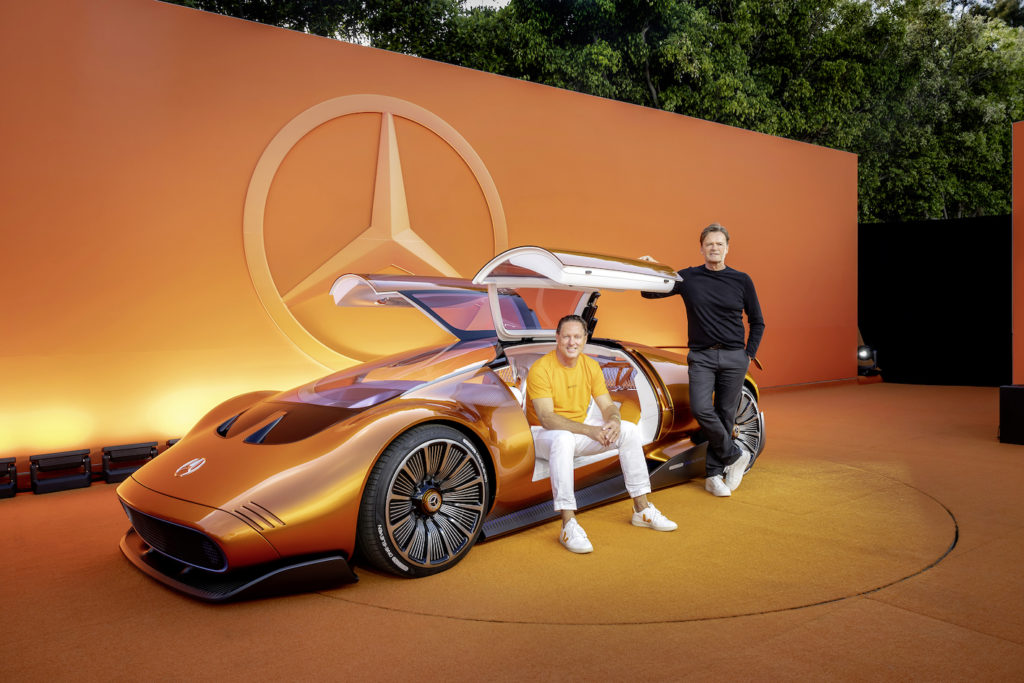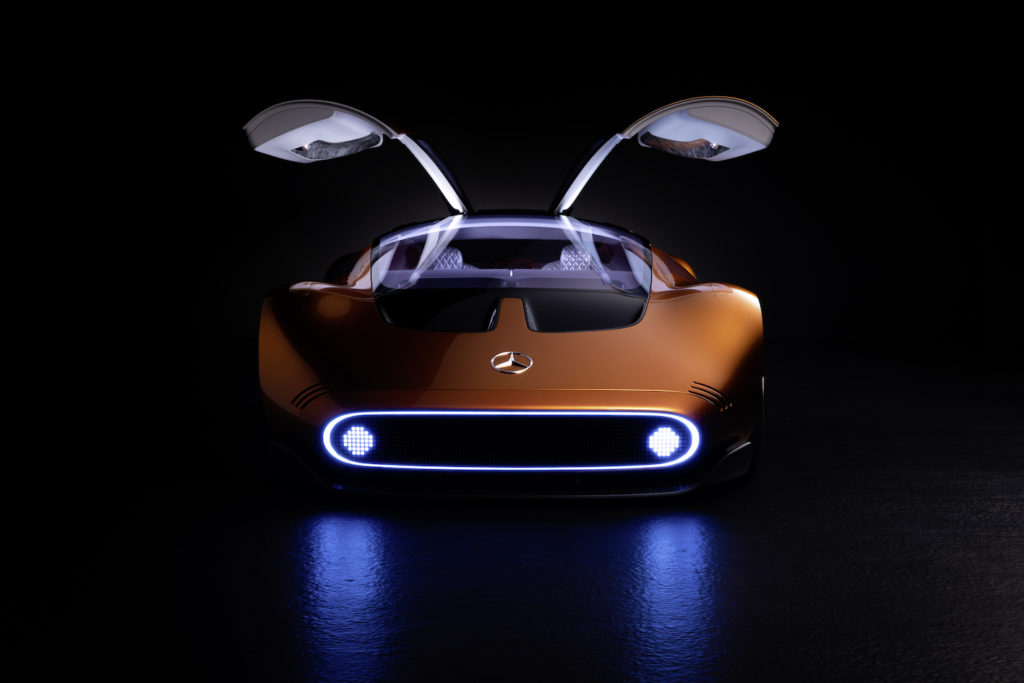
This time, it’s Mercedes’ turn to draw on something so obvious: “Mercedes’ history is a source of inspiration for the future”. Renault brought its R4 and R5 out of the museum to magnify them, Mercedes brought out the extraordinary C111 (or rather THE extraordinary C111s) to give birth to its One Eleven Vision concept car.
PRESENTATION VIDEO
These experimental C111 vehicles from the 1960s and 1970s were used to test the revolutionary Wankel rotary piston and turbodiesel engines. They were also used to test polymer-based bodywork. These aerodynamic mid-engined sports cars are regarded as design icons of their time, not least because of their gullwing doors and orange and black paintwork.
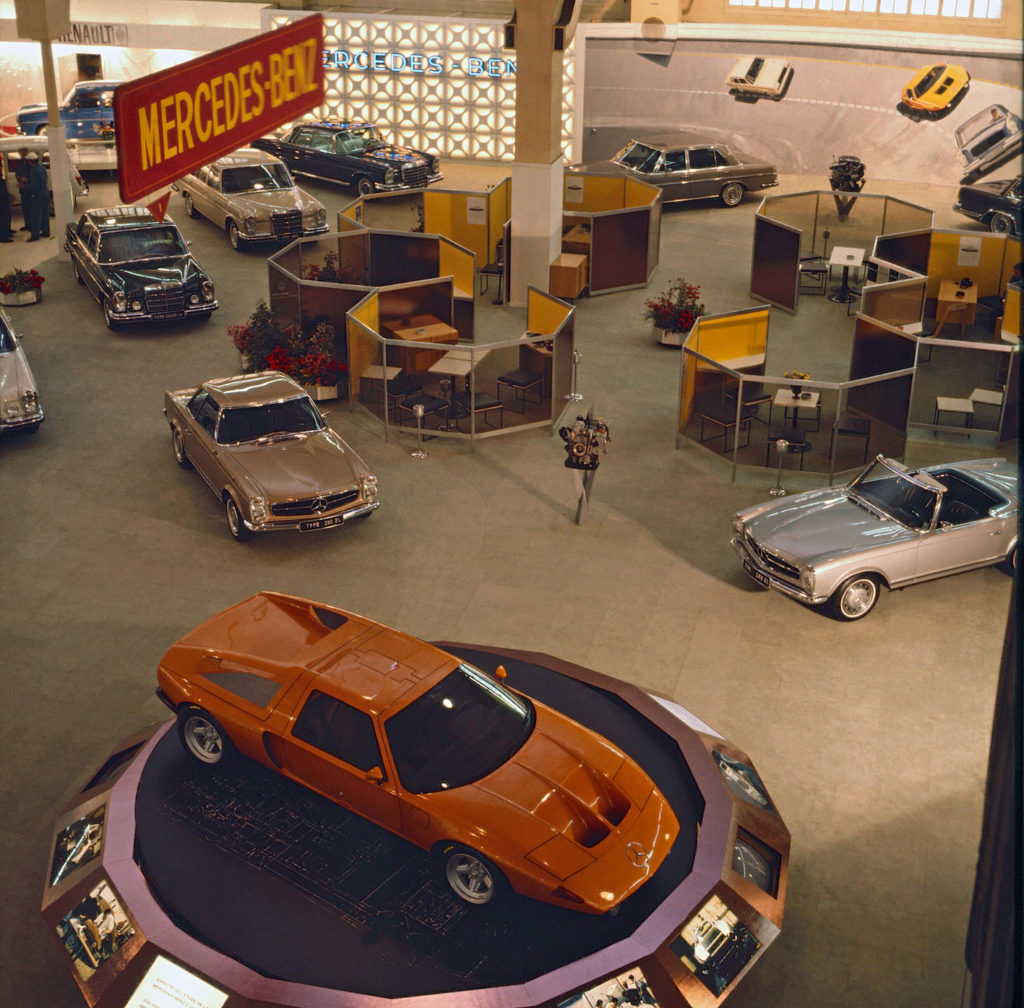
Mercedes confirms that “the design centres provide important impulses for the continued development of the design philosophy of sensual purity, and for setting trends with new design ideas. At the Carlsbad International Design Centre, the design team creates concept cars, studies for series production and mobility concepts for tomorrow and beyond.” The Californian lifestyle influences the site as much as its proximity to North America’s R&D center.
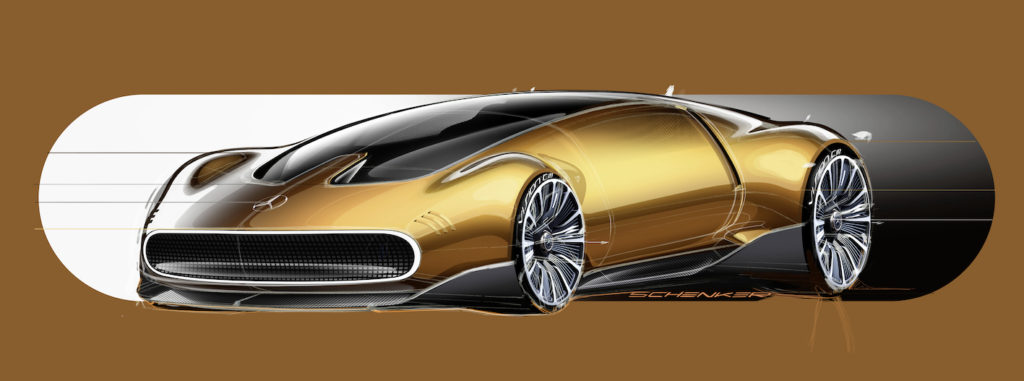
The Vision One-Eleven designed there combines a dynamic styling language with innovative all-electric powertrain technology. The supercar’s silhouette is characterised by the skilful execution of the Mercedes-Benz One-Bow signature, which is a hallmark of its 21st century styling. On the technical front, the extremely powerful and highly efficient axial-flow motor was developed by electric motor specialist YASA. One of the highlights of this technology is the new battery concept featuring high-performance liquid-cooled cylindrical cells with a new cell chemistry.

In addition, the Vision One-Eleven is equipped with two very powerful axial-flow motors created by YASA. Mercedes is collaboratively developing this technology until it reaches the stage of large-scale production for its next-generation electric motors. YASA, the Oxford-based British electric motor specialist, has been a wholly-owned subsidiary of Mercedes-Benz AG since July 2021. The company has thus secured access to a unique future technology that has the potential to take electric mobility to a new level of performance. WATCH THE VIDEO TO UNDERSTAND THE DIFFERENCES WITH CONVENTIONAL ELECTRIC MACHINES.
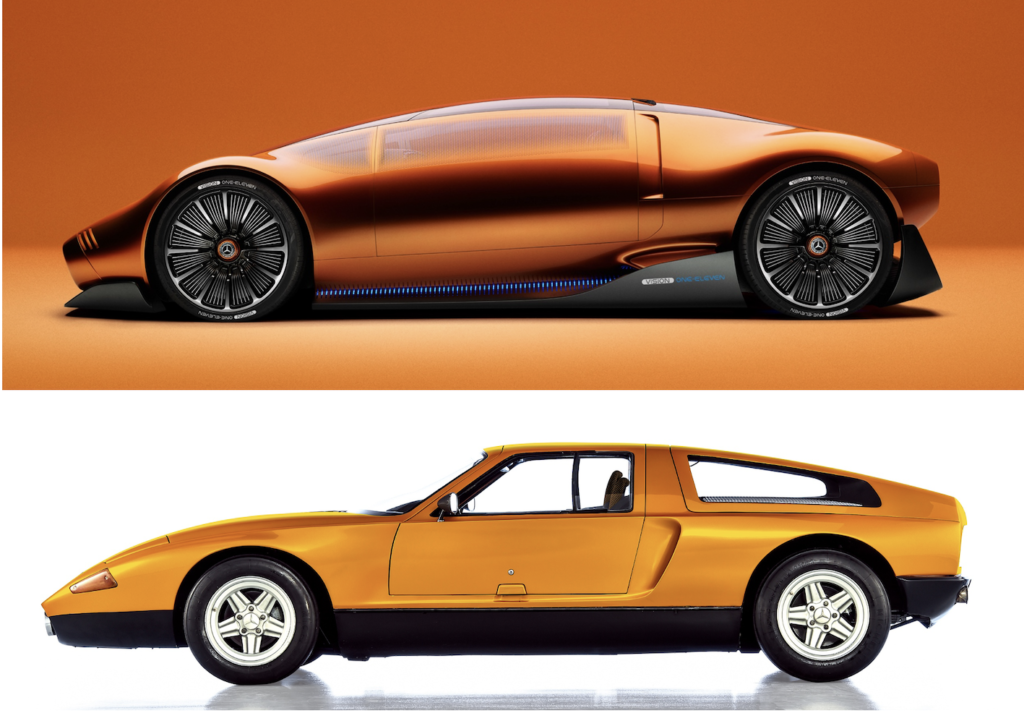
“At Mercedes-Benz, our aim is not to create style, but to create icons. For me, that’s what makes the difference between mainstream design and luxury. Design icons like the Type 300 SL and the C 111 – both with gullwing doors – are part of our DNA. These legendary vehicles were a major source of inspiration for the iconic design of Vision One-Eleven. It’s beauty and the extraordinary combined in a single vision of the future. The concept is fully electric and is a modern interpretation of the C 111, which was groundbreaking in its day. The element of surprise comes from its exceptionally clean, purist and, at the same time, extremely muscular proportions.” Gorden Wagener, Head of Brand Design at Mercedes.

The body of the Vision One-Eleven is based on a skilful execution of the One-Bow design. From the low-slung front to the muscular rear, it forms a smooth arc that gives the vehicle’s silhouette, only 1,170 mm high, a highly sculptural appearance. This look is perfectly matched by the Alubeam copper orange paintwork. It is an undeniable reference to the distinctive colour of the C 111, without adopting it identically.
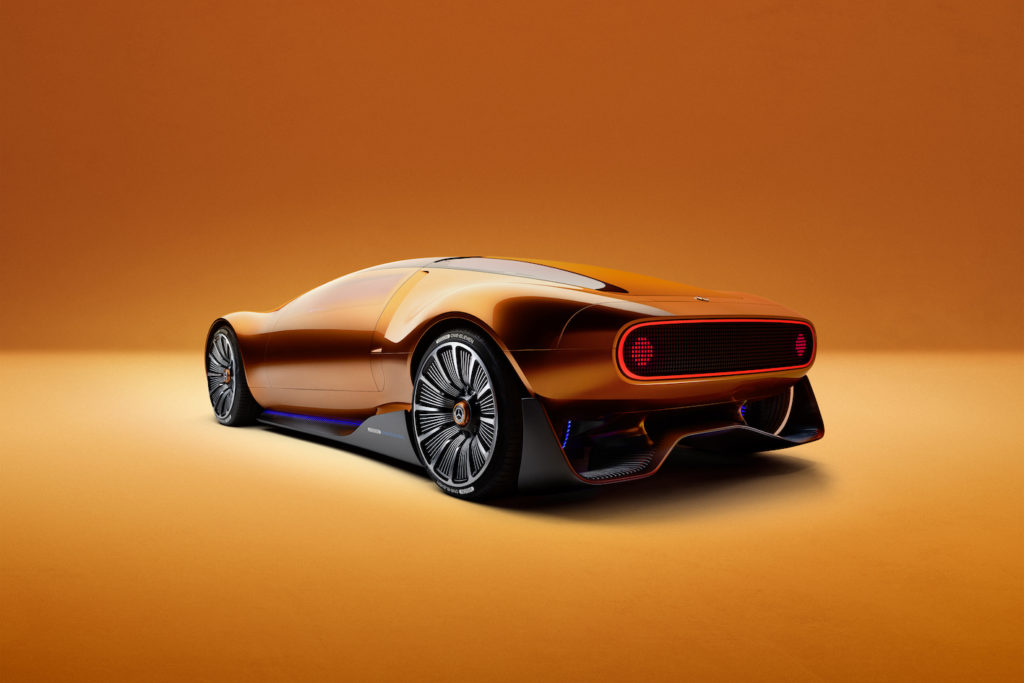
The side windows, which are opaque from the outside and camouflaged by a pixelated pattern. The design of the wheels incorporates powerfully structured elements that evoke the windings of an electric motor – a clear indicator of the Mercedes Vision One-Eleven’s advanced all-electric powertrain. These elements contrast sharply with the iconic, minimalist and smooth design of the vehicle’s surface.
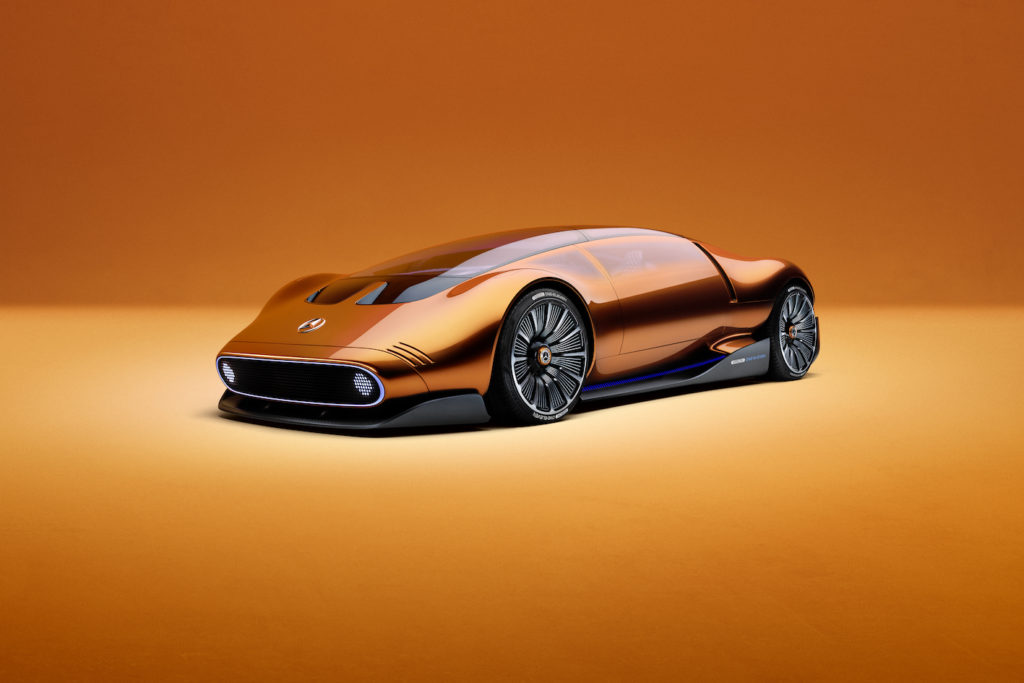
“Another emblematic element is our graphic signature at the front – in the case of AMG, for example, the typical AMG grille with vertical uprights, the widest part of which hovers close to the road. This A-shaped contour significantly shifts the visual centre of gravity downwards, evoking a predator ready to pounce. Another new element is the modification of the daytime running lights, the famous eyebrow above the headlights, which we have enhanced with a stylised star. We will be introducing these features successively across all model lines.” Gorden Wagener, Head of Brand Design at Mercedes.
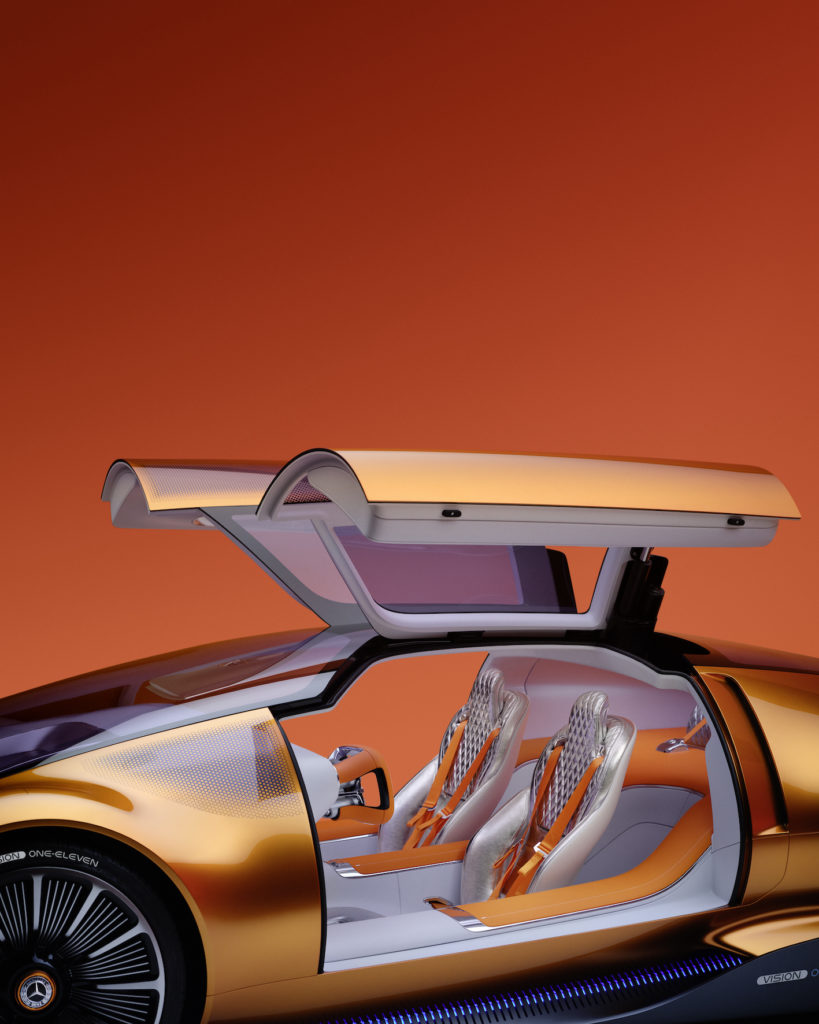
“Mercedes-Benz design has always had many iconic elements. Think of the gullwing doors on the 300 SL, or the shark nose of the 1950s and 1960s, which we still reinterpret today. The shark nose refers to a front design that slopes steeply forward, giving the vehicle a distinctive dynamic appearance.” Gorden Wagener, Head of Brand Design at Mercedes.
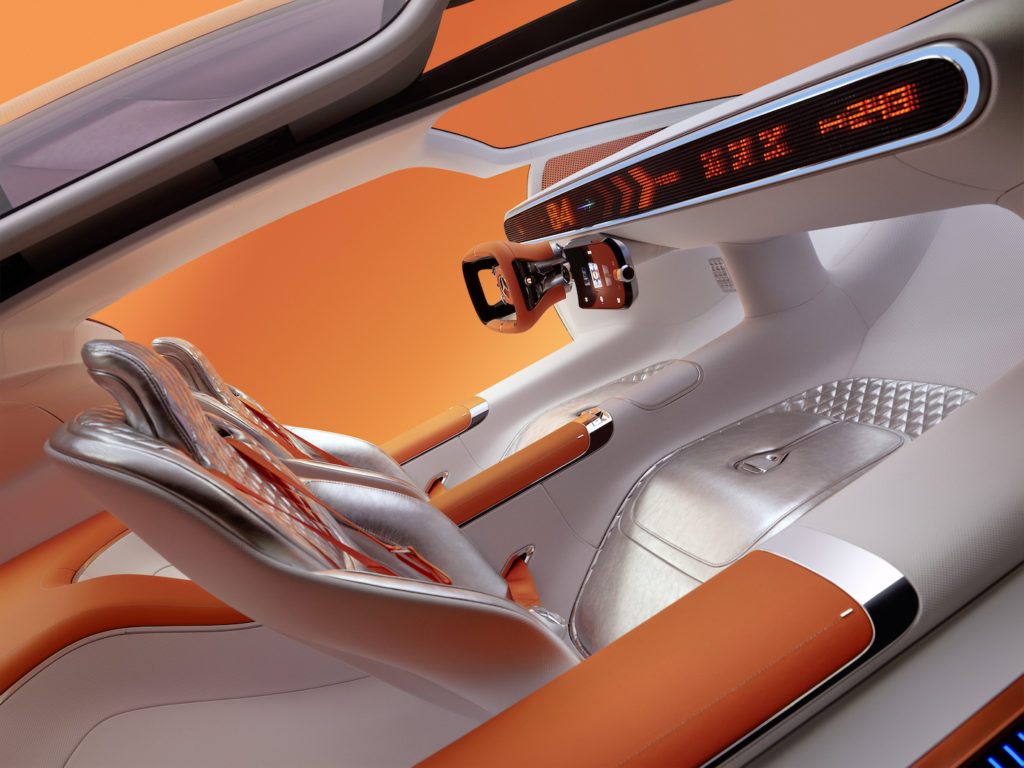
“Inside, the Vision One-Eleven presents the first sports car cabin with a living room concept. It reflects the paradigm shift between the self-driving sports car and the autonomous electric vehicle in the super sports car segment, and brings together two completely different states of mind. In race mode, with the backrest raised and the compact touchscreen facing the driver, the interior becomes that of a minimalist driving machine. Conversely, in lounge mode, the seats are fully integrated into the sculpture of the cabin, which merges the sills, central tunnel and luggage compartment into a single unit.” Gorden Wagener, Head of Brand Design at Mercedes.
